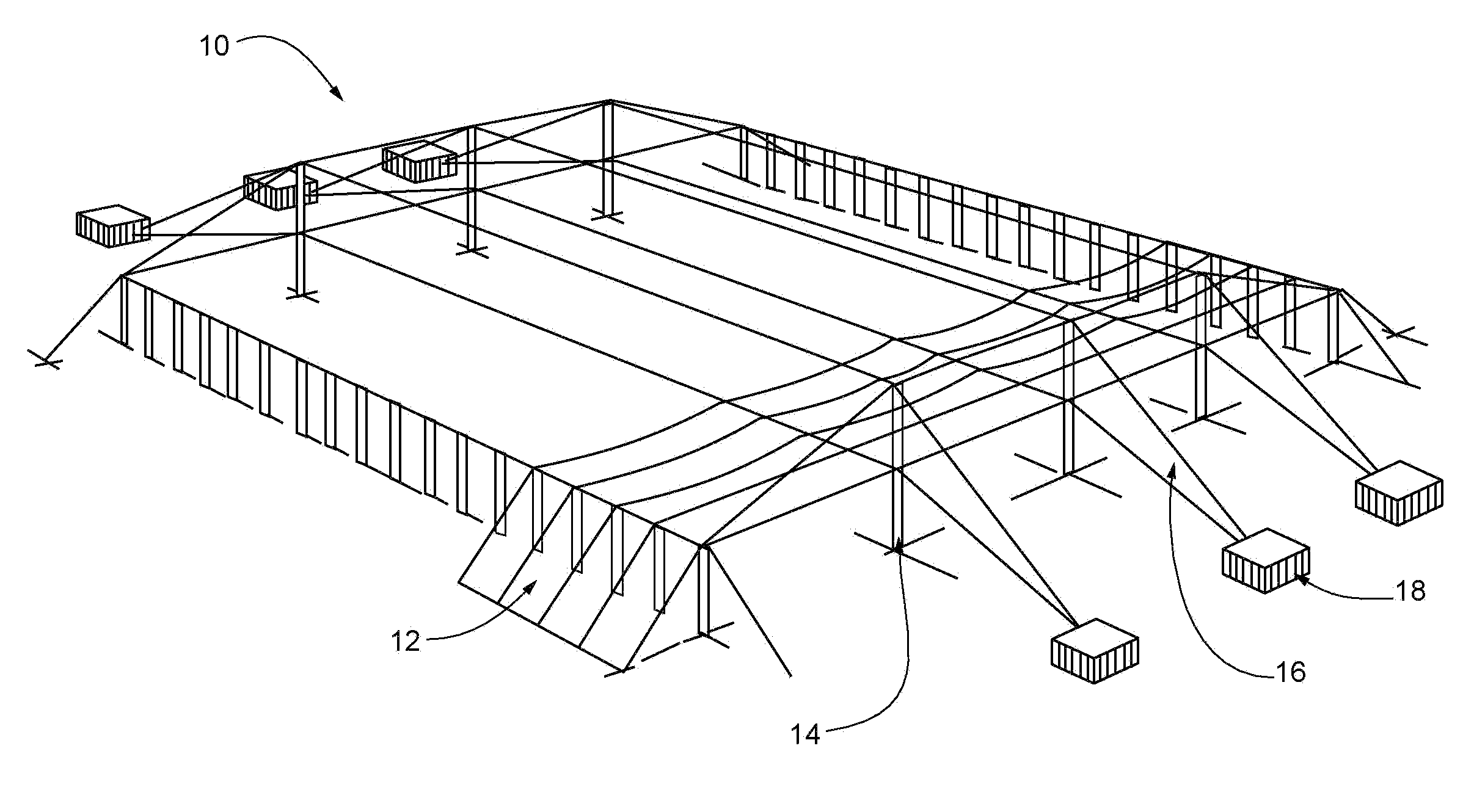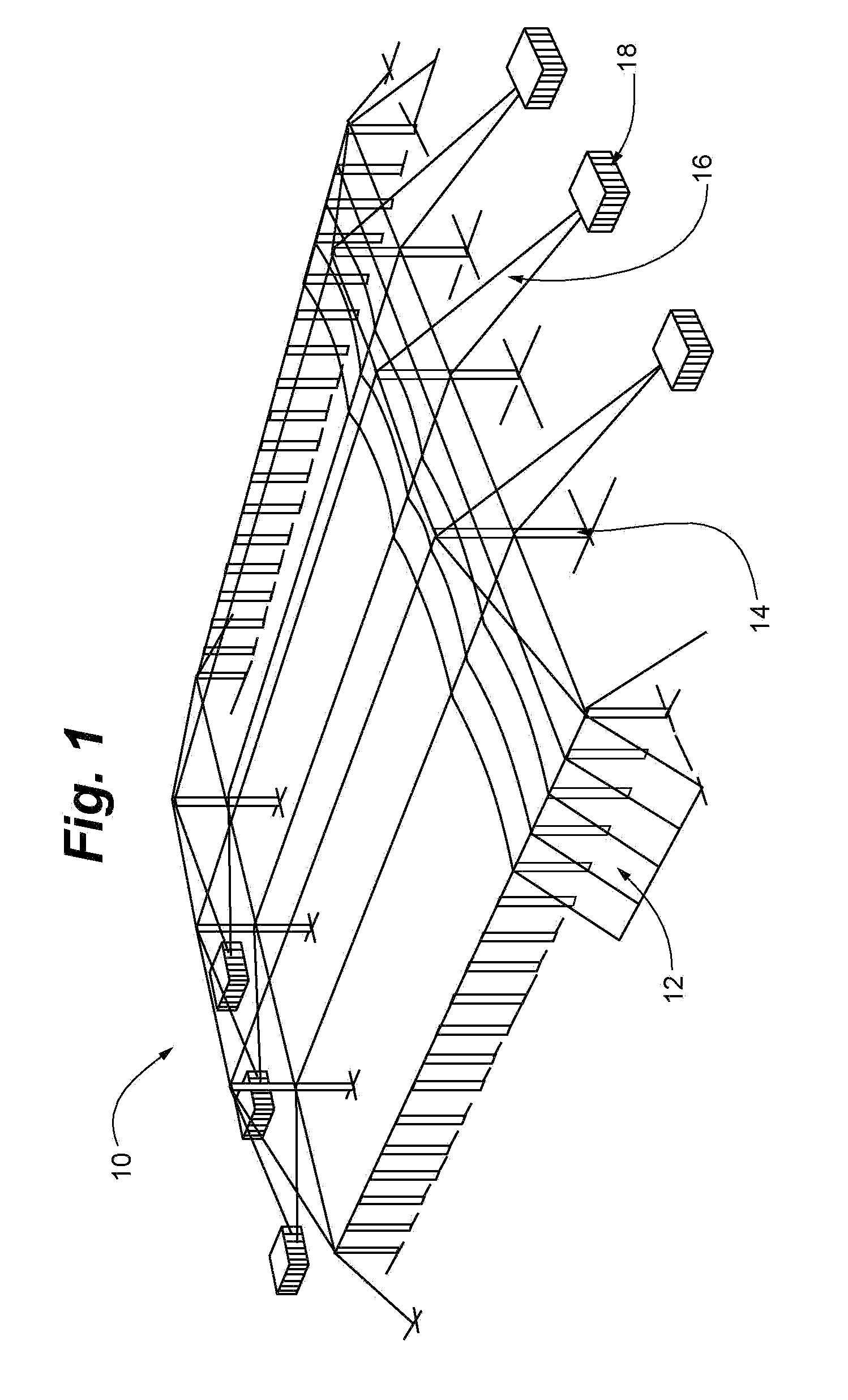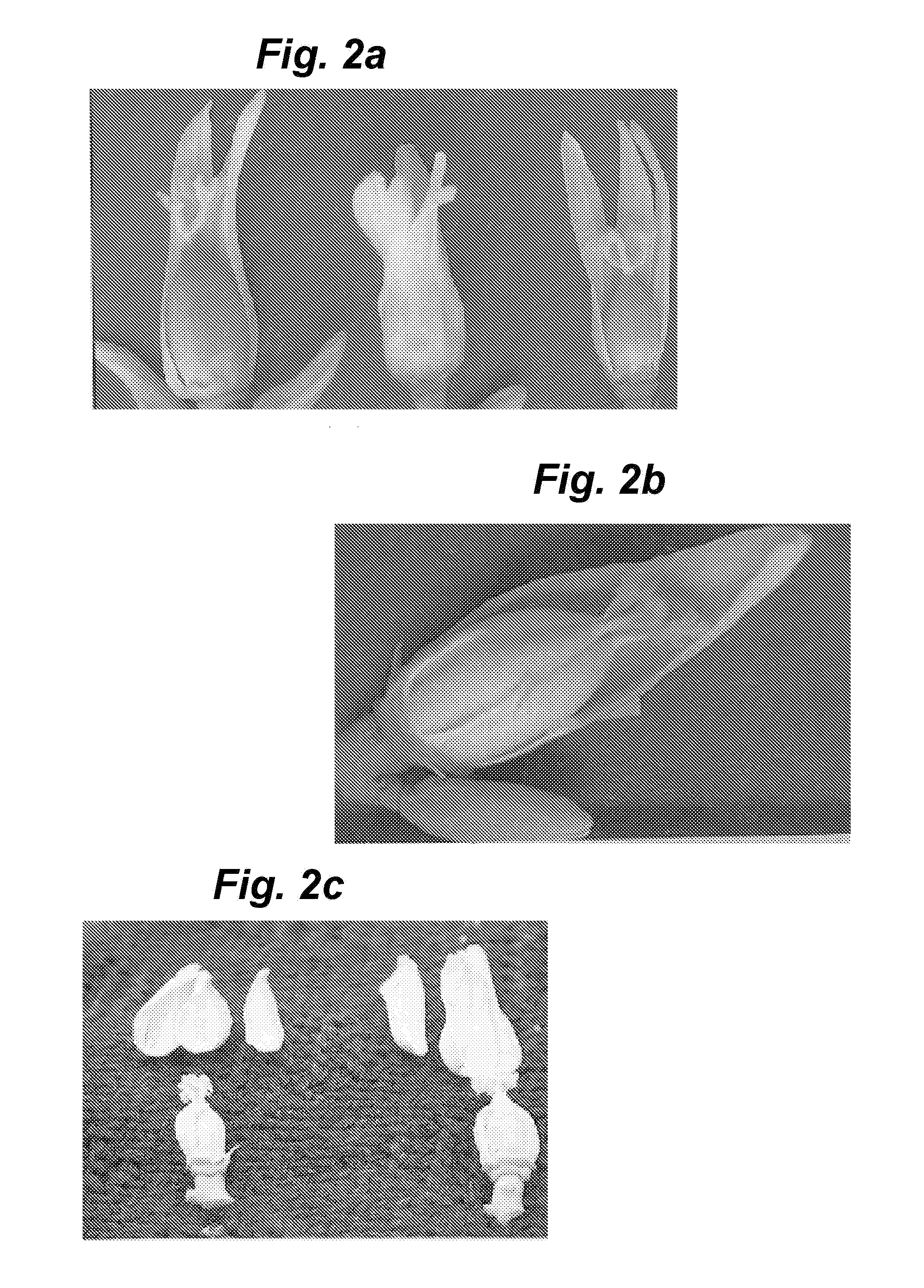Method and system for cultivating fruit
a technology of tropical fruits and cultivation methods, applied in the field of methods and systems for cultivating tropical fruits, can solve the problems of plant diseases that are easily transported, viral infections become the main problem in cultivated plants, and the industry is nearing collaps
- Summary
- Abstract
- Description
- Claims
- Application Information
AI Technical Summary
Benefits of technology
Problems solved by technology
Method used
Image
Examples
Embodiment Construction
[0033]The method and system of this invention can involve any or all the following aspects: a) the use of high genetic quality seeds having a genotype and phenotype typical to the Maradol fruit, b) the rapid germination of the seeds, c) planting and growth of seedlings under anti-aphid covering, d) production of fruit under a thermal anti-aphid tent, e) special nutrition based on compost and organic nutriment, and / or fertilization, and f) a system of zero tolerance for weeds within the tent.
[0034]A suitable structure (10) is provided in the diagram of FIG. 1, in which a suitable cloth like barrier (12) is held in place above the plants by means of a corresponding series of braces (14) which can be provided in wood, plastic, metal or combinations thereof, and are themselves held in position by the use of cables (16) or other suitable means, here shown tethered to the ground by means of connectors (18).
[0035]High genetic quality seeds, such as papaya seeds, can be purchased on the see...
PUM
 Login to View More
Login to View More Abstract
Description
Claims
Application Information
 Login to View More
Login to View More - R&D
- Intellectual Property
- Life Sciences
- Materials
- Tech Scout
- Unparalleled Data Quality
- Higher Quality Content
- 60% Fewer Hallucinations
Browse by: Latest US Patents, China's latest patents, Technical Efficacy Thesaurus, Application Domain, Technology Topic, Popular Technical Reports.
© 2025 PatSnap. All rights reserved.Legal|Privacy policy|Modern Slavery Act Transparency Statement|Sitemap|About US| Contact US: help@patsnap.com



